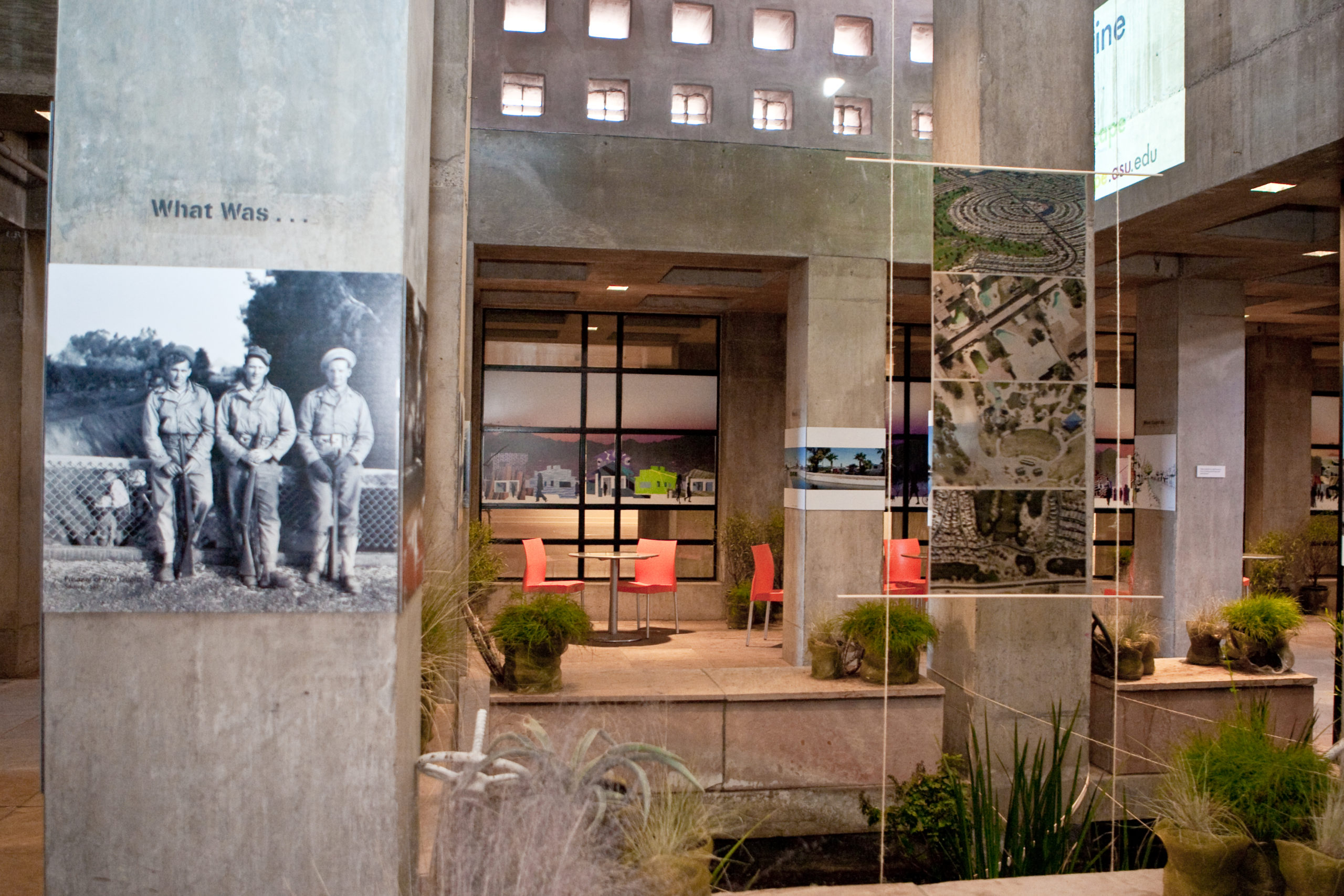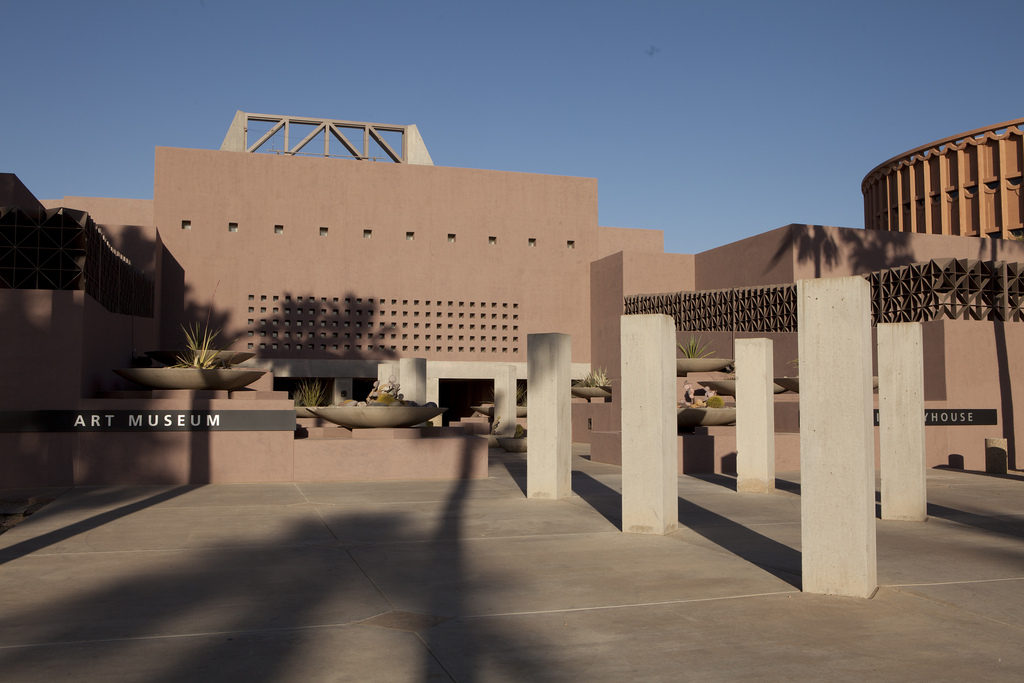Art is powerful. So powerful that it has the potential to influence our politics, society, and culture. All significant movements for positive change are often accompanied by outpourings of artistic expression that help convey powerful messages and inspire action. The Arizona State University Art Museum has a robust art and sustainability initiative, which regularly features artists in their exhibitions that consistently engage with the ongoing and complex challenges of sustainability. Is it any wonder that many believe them to be a catalyst for dialogue and change?
For over 20 years, the ASU Art Museum has presented a series of projects that have focused on the broad issues of sustainability. These projects have encouraged artists and the public alike to rethink the pressing issues of climate change, climate justice, biodiversity, and more. Exhibitions range from artists reflecting and commenting on these issues to providing concrete solutions, working individually or in large groups. At any given moment, artists may work inside the museum or directly engage with organizations, communities, or the natural environment.
Heather Sealy Lineberry, Curator Emeritus at the ASU Art Museum, said the project “Defining Sustainability” from 2009 was a true testament to the museum’s art and sustainability initiative. She explained that it opened at a time where the term “sustainability” was starting to slip into the public’s vernacular, shifting away from its strict use in policy. This shift invited artists and designers to explore the larger concept of sustainability through a range of formats and materials.
“Defining Sustainability” was a series of exhibitions that focused on the complexity of sustaining life on earth, and highlighted issues of sustainability specific to the desert and other environments. A few features from the series included a project called “Native Confluence: Sustaining Cultures” created by a group of contemporary indigenous artists that spoke to an indigenous and holistic worldview of practicing sustainability, as well as a project called “Political Ply” created by design students who got the chance to create shade structures using recycled political posters. Overall, “Defining Sustainability” did a spectacular job of touching on a breadth of subjects within sustainability, including environmental, social, and cultural aspects.

Although there are many more exhibitions that have focused on sustainability at the ASU Art Museum, a couple of honorable mentions selected by Lineberry include the projects “Feast on the Street” from 2013 and “Trout Fishing in America and other Stories” from 2015.
Feast on the Street was a massive urban harvest festival that brought people together around a half-mile-long community dinner table in downtown Phoenix to celebrate people, food, and art in the desert. The ASU Art Museum collaborated actively with organizations throughout Phoenix and Roosevelt Row, along with artists Clare Patey and Matthew Moore, to reclaim the city street. The festival’s agenda included discussions about growing food responsibly in the desert, composting food scraps, using solar energy, utilizing community gardens, and more. Ultimately, this interactive exhibit helped people understand the whole cycle of a meal – from growth to production, consumption, and disposal.
“Trout Fishing in America and other Stories,” by international artists Bryndis Snæbjörnsdóttir and Mark Wilson, took on issues specific to animal conservation and the decrease of biodiversity. They researched programs underway to reintroduce the California Condor and the Humpback Chub into the Grand Canyon, documenting their journey along the way. Their exhibition included photographs, videos, and sculptures that explored human and animal interaction. This inspired further discussions at the museum on how we interact with animals in our environment.
There is a multitude of ways an artist can communicate information or express a powerful message through their artwork. “Artists have the ability to engage with both data and affect,” says Lineberry. “A lot of the artists that are working today on the issues of sustainability are expert researchers and have done the work… but can [also] bring to the equation the emotional impact. Whether with object or performance, they can really bring about change in perspective and even change in behavior by including that emotional component.”
The next exhibition at the ASU Art Museum that will focus on sustainability will be “New Earthworks,” opening on April 16, 2022. According to Lineberry, this exhibition will present works by eight contemporary artists who explore our interconnectedness with the earth. Their objects, mixed media installations, and performances will take on issues of decreasing biodiversity and environmental justice, reassert indigenous knowledge, and envision new systems to address climate change.
While you are waiting for the “New Earthworks” exhibition to open next year, you can visit the ASU Art Museum to see their current exhibition “Undoing Time: Art and Histories of Incarceration,”
which explores America’s historic incarceration system and its foundational roots. If you pay close attention, you may see some links between our current carceral system and its negative sustainability impacts throughout the exhibit. Isn’t it interesting how it is all related?

New Earthworks Artists:
David Brooks, http://davidbrooksstudio.com
Carolina Caycedo, http://carolinacaycedo.com
Desert Artlab/April Bojorquez and Matt Garcia, http://www.desertartlab.com
Hope Ginsburg, https://www.hopeginsburg.com
Scott Hocking, http://scotthocking.com
Mary Mattingly, https://marymattingly.com
Sam Van Aken, https://www.samvanaken.com
Steven Yazzie, http://yazziestudio.com
Keep up with all of Green Living’s original content online and on social media.






